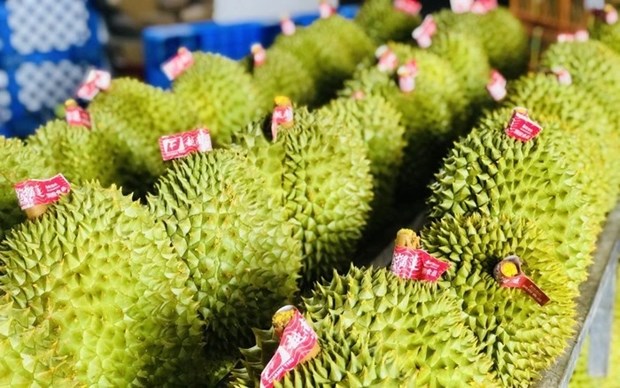Vietnam is striving to further assert its durian export position and join the billion-dollar export industry with the current advantages in hand, coupled with efforts to better the fruit quality. The country is working hard to tap the potential and expand global reach for the sector.
Statistics from the Ministry of Agriculture and Rural Development (MARD) show that Vietnam has more than 110,000 ha of durian with a yearly output of nearly 850,000 tonnes. The country’s major durian-growing areas include the Central Highlands with more than 52,000 ha, accounting for about 47% of the total area, the Mekong Delta region with 33,000 ha (about 30%), and the Southeast region with 21,000 ha (about 19%).
Thanks to the advantage of high selling prices and the preference of import markets, Vietnamese durian has risen to a much higher position compared to other crops such as pepper, dragon fruit, and rubber. In the last five years, the durian growing area increased by nearly 25% yearly.
According to Do Ha Nam, Chairman of the Board of Directors and General Director of Intimex Group, crops such as coffee and pepper yield profits ranging from 200 - 300 million VND (8,100 – 12,150 USD) per hectare/year, while durian trees generate yearly profits of 2 billion VND per hectare.
There has never been an agricultural product that quickly brought in billion-dollar export revenue like durian upon entering the global market, Nam said.
Among the largest durian importers, China continues to be the most promising market for the fruit, said Nguyen Quang Hoa, Director of Duong Vu Co., Ltd.
According to statistics from the MARD, Vietnamese durian has reached 24 markets, with the export value to China accounting for over 99% of the total export turnover of the fruit.
Enterprises forecast that in 2024 and the following years, China will continue to be the main consumer of this fruit.
The durian industry has been projected to grow by 7.2% per year in the 2019-2025 period. This is considered an opportunity for Vietnam to sustainably develop its durian industry in the future.
Tran Thanh Nam, Deputy Minister of Agriculture and Rural Development, emphasised the need for durian farmers and export enterprises to ensure the quality, design, and origin of goods when exporting to China to ensure that Vietnamese durians can maintain their position in this market.
According to General Secretary of the Vietnam Vegetable and Fruit Association Dang Phuc Nguyen, there remains a lot of room for Vietnam to export durian to both the Chinese and the global market.
He predicted that the export turnover of the fruit could reach approximately 3.5 billion USD this year./.



















